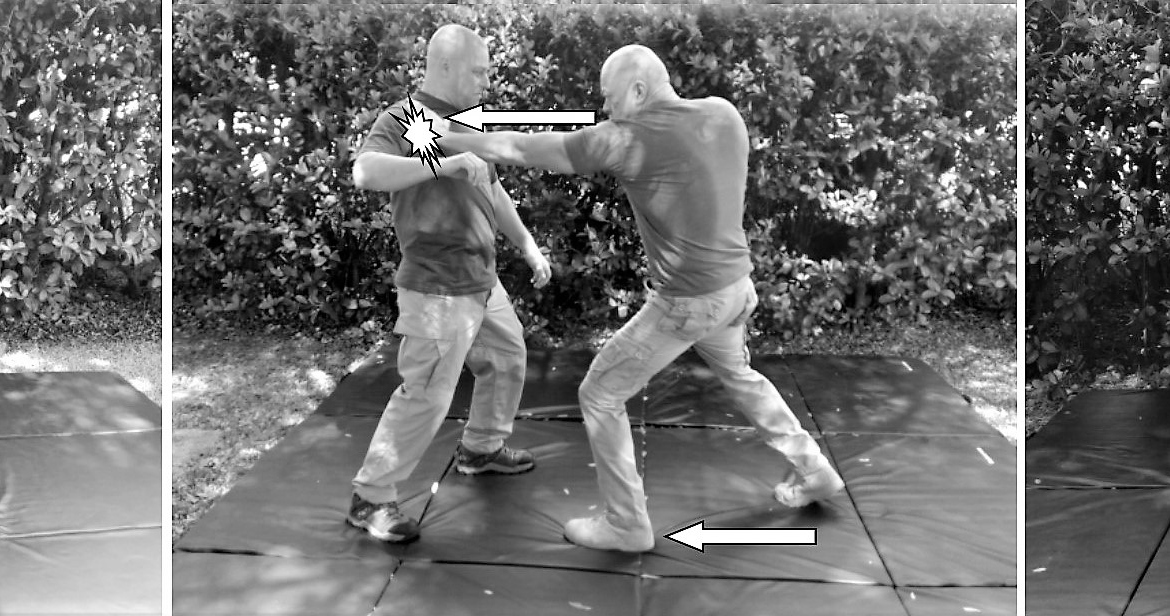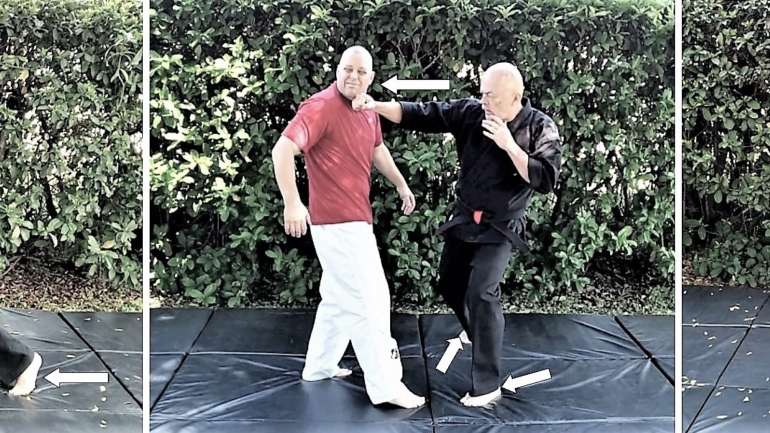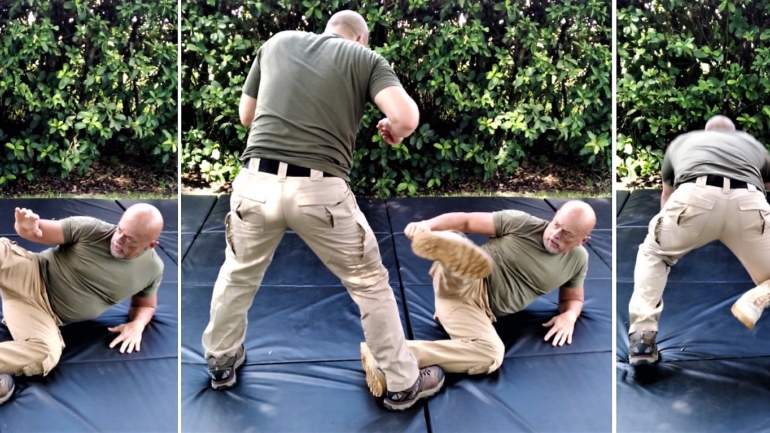During WWII, military combatives programs prioritized techniques that were practical, easy to learn, and effective under stress. The reverse hip throw was one of four core throws taught across U.S. military training manuals because of its proven success in both training and real combat scenarios.
The reverse hip throw is straight forward to execute and relies on leveraging the hips as a fulcrum to throw an opponent, making it effective even for soldiers with minimal training. When used ballistically it allowed users to incapacitate opponents quickly by driving them into the ground with significant force, potentially causing serious injury or rendering them unable to continue fighting. This throw could be applied from various positions, making it adaptable in dynamic combat situations. Soldiers could transition into the throw from striking or grappling engagements, ensuring its utility in unpredictable encounters.
REVERSE HIP THROW
The Reverse Hip Throw in Combat Judo is a powerful and aggressive technique that is designed to disrupt an opponent’s balance and execute a decisive throw by leveraging torque and momentum. Your hip acts as a pivot point, allowing you to use leverage rather than brute strength. By breaking the opponent’s balance and positioning their center of mass over your hip, you can execute the throw effectively even against larger opponents. This technique is versatile and can end a confrontation decisively when performed correctly.

1.) Both are standing in a right foot forward fighting stance. 2.) Push off the left foot and step straight in with the right foot at the same STRIKE your opponent hard on his right shoulder with the heel of your left hand and grab his clothing at the area struck. This is delivered much like a lead straight punch in boxing. The blow should be hard enough to cause him to momentarily lose balance. 3.) Push off your right foot and step toward eleven o’clock with your left foot to the outside of your opponent’s right foot.

4.) Bring your right foot forward and Step around with your right foot, placing it directly behind the opponent. Thrust your hips to the right to achieve buttock-to-buttock contact, pulling the opponent onto your right hip. Their arm should be locked against your side by your left elbow. Your knees should be bent, your hips should be lower than his hips, feet shoulder width apart and your body bent forward slightly. 5.) Using your right hip as the fulcrum, straighten your legs thrusting your hips upward. Continue the pull with the left hand. At the same time bend forward and start turning your torso to the left. 6.) Finish the throw by the pulling your left elbow toward your left hip and knee forward and downward with both arms driving your opponent into the ground. Throw the opponent over your right hip and NOT over the outside of your right leg. Maintain your arm lock on the opponent’s right arm.
The reverse hip throw and its variations in Combat Judo exemplifies how classical physics principles—stability, torque, angular momentum, and biomechanics—are applied to martial arts techniques. By combining precise movements with an understanding of leverage and rotation, this throw becomes both efficient and devastating in its application.
Key Physics Concepts
Center of Mass and Stability:
The throw aims to disrupt the opponent’s balance by shifting their center of mass outside their base of support. This is achieved through a combination of strikes, grips, and body positioning. By striking the opponent’s shoulder, their posture is disrupted, causing their center of mass to move forward or sideways, making them unstable.
Torque and Lever Arms:
Torque (τ) is the rotational force applied around a pivot point. It is calculated as:
τ=F⋅r
where F is the force applied, and r is the lever arm (the perpendicular distance from the pivot point to the line of action of the force).
In the reverse hip throw, two key torques are involved:
A.) The initial torque destabilizes the opponent by pulling them forward and downward.
B.) The second torque rotates them over the practitioner’s hip (the pivot point), created by thrusting the hips upward while pulling with the arms.
Angular Momentum:
As the opponent is lifted onto the practitioner’s hip, their body rotates due to angular momentum. The practitioner’s movements—thrusting hips upward and pulling arms downward—generate this rotational motion.
Biomechanics and Hip Rotation:
A.) Proper execution requires bending the knees deeply and lowering the practitioner’s hips below the opponent’s hips. This positioning maximizes leverage while minimizing reliance on brute strength.
B.) Rotational force generated by hip movement converts vertical power from the legs into horizontal and rotational motion, essential for completing the throw.
Steps in Execution with Physics
Entry and Disruption:
The practitioner steps in with their right foot while striking the opponent’s shoulder with their left hand. This disrupts balance by moving the opponent’s center of mass forward or sideways. Simultaneously, grip the opponent’s shirt at the area struck or the arm at the tricep, ensuring control over their movement.
Positioning for Torque:
The practitioner steps around with their right foot to position themselves behind and slightly to the side of their opponent. Their hips make contact with the opponent’s body (buttock-to-buttock), creating a pivot point for rotation.
Generating Rotational Force:
With knees bent and hips lower than the opponent’s, they straighten their legs explosively while thrusting hips upward. Simultaneously, the left hand pulls downward bringing your left elbow to your left hip rotating their torso to amplify torque and angular momentum.
Completion of Throw:
The combined forces drive the opponent over the practitioner’s hip in a controlled arc, landing them flat on their back or face-first on the ground. Proper follow-through ensures that all forces are directed efficiently into completing the throw.
REVERSE HIP THROW (Neck and arm variation)
This neck and arm variation emphasizes disruption, control, and explosive execution, making it a versatile tool in Combat Judo for self-defense or military applications. This variation of the reverse hip throw in Combat Judo, is a powerful technique rooted in the principles of classical mechanics. Its effectiveness relies on leveraging forces, torques, and rotational motion to destabilize and throw an opponent.

1.) Both of you are fighting out of a right foot forward lead. 2.) Step straight in with the left foot and STRIKE your opponent hard on his right shoulder with the heel of your left hand. This should be hard enough to rock him back on his heels. 3.) Over hook and grasp your opponent’s right arm with your left hand at the triceps and pull his arm into you as your push of the right foot and step toward eleven o’clock with your left foot. STRIKE the throat or side of the neck with the inside (the boney area of your forearm) of your right forearm then encircle the opponent’s neck.

4.) Step your right foot directly behind the opponent. Your opponent’s right arm should be locked in to your side with your left elbow. Thrust your hips to the right to achieve buttock-to-buttock contact, pulling the opponent onto your right hip. Their arm should be locked against your side by your left elbow. Your knees should be bent, your hips should be lower than his hips, feet shoulder width apart and your body bent forward slightly. 5.) Using your right hip as the fulcrum, straighten your legs thrusting your hips upward. Continue the pull with the left hand. At the same time bend forward and start turning your torso to the left. 6.) Finish the throw by the pulling your left elbow toward your left hip and knee forward and downward with both arms driving your opponent into the ground. Throw the opponent over your right hip and NOT over the outside of your right leg. Maintain your arm lock on the opponent’s right arm.



